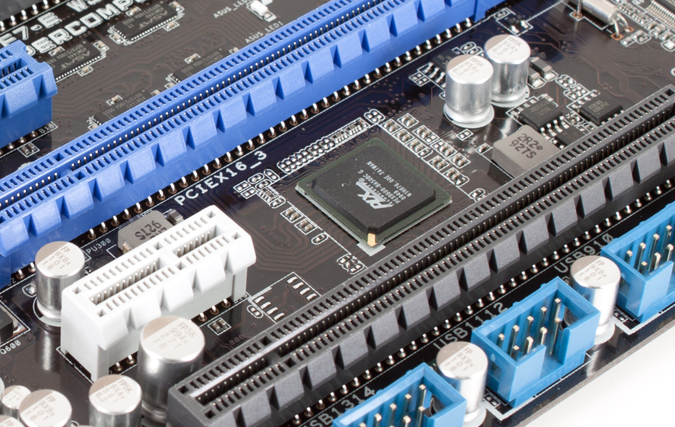Editorials
 Facebook has finally bought facial recognition company Face.com. For those of you that do not know Face.com are the people behind the facial recognition API in Facebook and their Apps for both iOS and Android. This technology (that is also used in a few other apps) has brought about a wave of privacy concerns (as is tagging of any kind really). It is known that Face.com stores face information in a database and is capable up dating facial information as more pictures of an individual are tagged. This can be used to create a very accurate likeness model of someone regardless of what they do to change or conceal their appearance (with the exception of radical plastic surgery or prosthetics).
Facebook has finally bought facial recognition company Face.com. For those of you that do not know Face.com are the people behind the facial recognition API in Facebook and their Apps for both iOS and Android. This technology (that is also used in a few other apps) has brought about a wave of privacy concerns (as is tagging of any kind really). It is known that Face.com stores face information in a database and is capable up dating facial information as more pictures of an individual are tagged. This can be used to create a very accurate likeness model of someone regardless of what they do to change or conceal their appearance (with the exception of radical plastic surgery or prosthetics).
- Details
- By Sean Kalinich
- Hits: 5090
Read more: Facebook Buys Face.com, Gets a Database of Faces...
 After the leak (and subsequent removal) of an alleged set of documents showing Microsoft’s plans for the next generation of Xbox (the Xbox 720?) complete with a 2013 launch timeframe we have started to try and piece together what is going on and if there is any credibility to the original posting. The original presentation appears to have been prepared in 2010 (again if they are real) and outline some very interesting inclusions for the gaming console. Some of these have actually appeared recently (like Smart Glass) while others are things we already know Microsoft to be working on. We should probably start off by saying that we do think the posted documents are real, but that they represent a direction that Microsoft has probably changed since these were produced.
After the leak (and subsequent removal) of an alleged set of documents showing Microsoft’s plans for the next generation of Xbox (the Xbox 720?) complete with a 2013 launch timeframe we have started to try and piece together what is going on and if there is any credibility to the original posting. The original presentation appears to have been prepared in 2010 (again if they are real) and outline some very interesting inclusions for the gaming console. Some of these have actually appeared recently (like Smart Glass) while others are things we already know Microsoft to be working on. We should probably start off by saying that we do think the posted documents are real, but that they represent a direction that Microsoft has probably changed since these were produced.
- Details
- By Sean Kalinich
- Hits: 3743
Read more: Xbox 720 Documents Most Likely Real, But Far Out...
 We have talked at length about Facebook and some of the ways they take advantage of their user base. One of the last ones we talked about directly was the paid promotions idea that they came up with. For a few dollars you can promote your advertising to reach more of the people that like your page. We have called this idea a lot of things (some not suitable for printing) and likened it to paid spam.
We have talked at length about Facebook and some of the ways they take advantage of their user base. One of the last ones we talked about directly was the paid promotions idea that they came up with. For a few dollars you can promote your advertising to reach more of the people that like your page. We have called this idea a lot of things (some not suitable for printing) and likened it to paid spam.
- Details
- By Sean Kalinich
- Hits: 4334
 There is a nice news story going around showing Linus Torvalds giving nVidia the finger over their support (or lack of support) for Linux. After watching the video and reading a few of the articles we have to say this about the whole story…. It is spot on, but it was not always that way. I can remember in the early days of the Opteron and Athlon 64 when nVidia (and AMD) had a pretty healthy Linux driver program.
There is a nice news story going around showing Linus Torvalds giving nVidia the finger over their support (or lack of support) for Linux. After watching the video and reading a few of the articles we have to say this about the whole story…. It is spot on, but it was not always that way. I can remember in the early days of the Opteron and Athlon 64 when nVidia (and AMD) had a pretty healthy Linux driver program.
- Details
- By Sean Kalinich
- Hits: 6064
Read more: Linus Torvalds Gives nVidia The Finger Over Poor...
 When Lynnfield launched with its built in PCIe controller the motherboard makers of the world collectively groaned. They began to wonder how in the world they were going to run everything they want to put onto their motherboards with the limited number of PCIe lanes that were provided. The answer to this solution was simple, use a bridge chip… the problem was that there were not many that were up to the job. One of these companies that quickly became synonymous with high-performance motherboards was PLX. We first saw these on Asus motherboards (the P55 motherboards) and the system simply worked. Since then many more motherboard makers have adopted them and come to reply on PLX to keep things moving.
When Lynnfield launched with its built in PCIe controller the motherboard makers of the world collectively groaned. They began to wonder how in the world they were going to run everything they want to put onto their motherboards with the limited number of PCIe lanes that were provided. The answer to this solution was simple, use a bridge chip… the problem was that there were not many that were up to the job. One of these companies that quickly became synonymous with high-performance motherboards was PLX. We first saw these on Asus motherboards (the P55 motherboards) and the system simply worked. Since then many more motherboard makers have adopted them and come to reply on PLX to keep things moving.
- Details
- By Sean Kalinich
- Hits: 5000
Read more: Possible Shortage of PLX PEX8747 Gen 3.0 Bridges...
More Articles …
- Flaw Found in XML Core Services By Google Leads to Targeted Attack On Gmail Rumor
- Is The Curse of Windows Phone Hitting Nokia, Or Will We See Microsoft Pull Off Something On Monday?
- Flame Authors Used A Vulnerability in MD5 that Microsoft Knew About in 2008
- Steve Wozniak Complains About Siri; Says Apple Ruined it, But Did They Really?
Page 49 of 89



